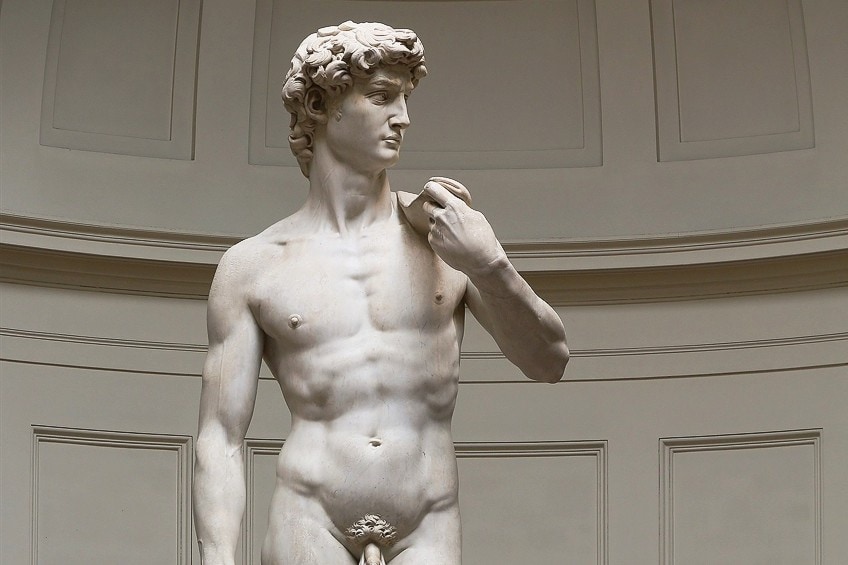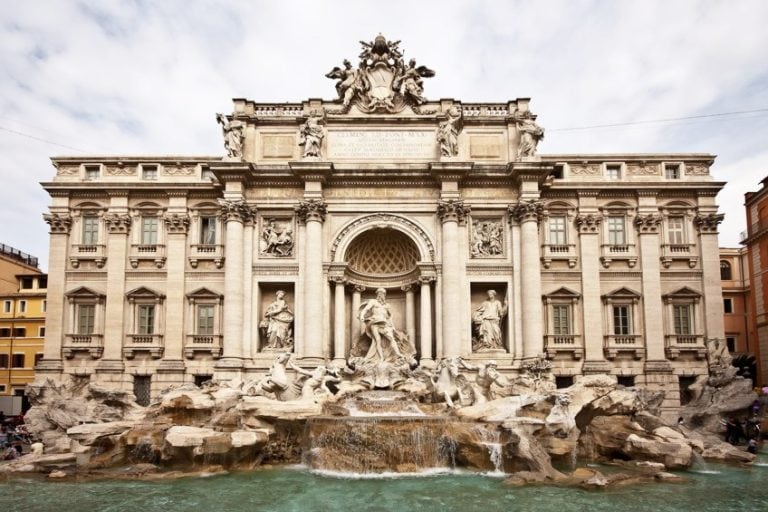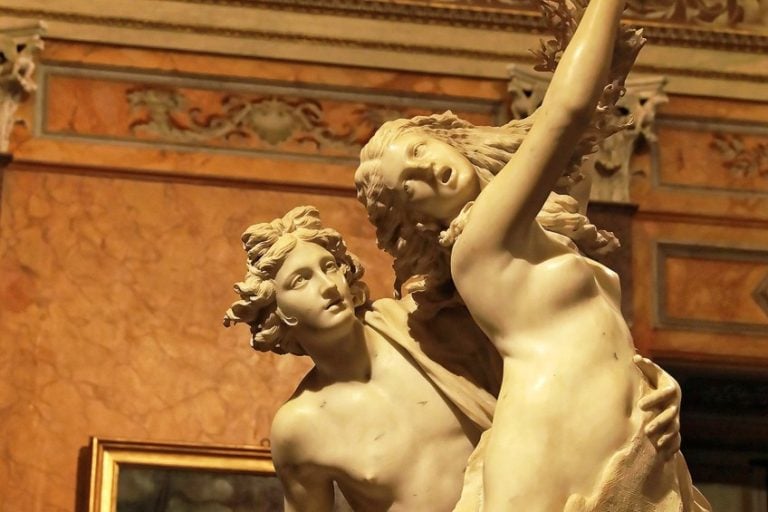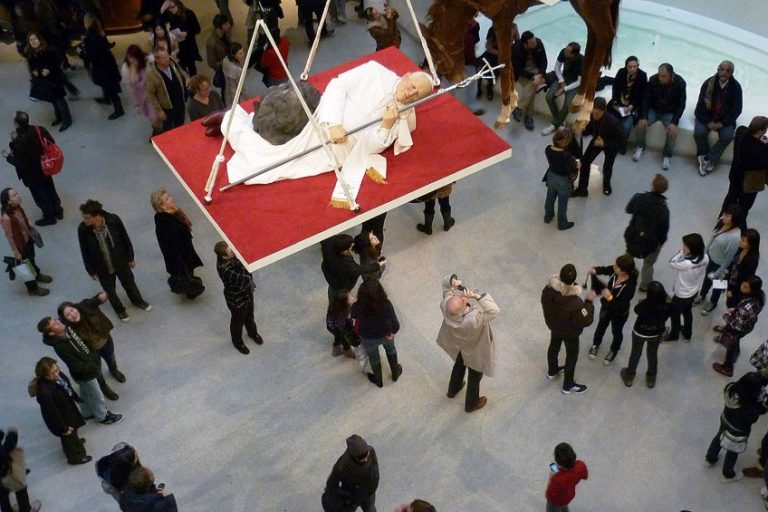Statue of David by Michelangelo – Study This Michelangelo Statue
The statue of David by Michelangelo is among the most easily recognized sculptures in the world. The Guild of Wool Merchants, who were in charge of maintaining and embellishing the Florence Cathedral, commissioned the sculpture of David. Where is the statue of David and how tall is the statue of David? Let us discover more about the most famous of Michelangelo’s sculptures, David.
Learning about the Statue of David by Michelangelo
Typically, David was shown victorious over Goliath following his triumph, but the Michelangelo statue departs from how David is often portrayed. Instead of showing us the victor with the giant’s skull at his feet and the strong sword in his hand, he shows us the youngster right before the combat. Perhaps Michelangelo’s statue was captured at the precise time when he heard that his people were hesitant and saw Goliath taunting and heckling at them.
Michelangelo’s sculptures are in a league of their own, but what do you know of the man who created them?
Michelangelo: Creator of the Sculpture of David
| Nationality | Italian |
| Date of Birth | 6 March 1475 |
| Date of Death | 18 February 1564 |
| Place of Birth | Caprese Michelangelo, Italy |
A sculptor, painter, architect, and writer, Michelangelo Buonarroti is regarded as one of the greatest creators of the Italian Renaissance. Before learning in the sculpture gardens of the illustrious Medici family, Michelangelo worked as an artist’s assistant. A magnificent artistic career that was renowned in his era for its brilliance ensued. Despite always identifying as Florentine, Michelangelo actually spent most of his life in Rome.
Michelangelo was more interested in observing the artists at the adjacent churches and then copying what he saw than in going to school.

Domenico Ghirlandaio may have been introduced to Michelangelo through his classmate from grammar school, Francesco Granacci, who is six years his senior. Early on, Michelangelo’s father noticed that his son had little interest in the family trade, so when he was 13, his father decided to let him become an apprentice to Ghirlandaio at the renowned Florentine artist’s studio. Michelangelo was introduced to the fresco method there.
Michelangelo learned classical sculpture in the palace gardens of Lorenzo de’ Medici, the Florentine monarch, and head of the illustrious Medici family, from 1489 to 1492.
After barely a year at Ghirlandaio’s studio, on the advice of his tutor, an extraordinary chance became available to him. This was a fruitful time for Michelangelo because of his years spent living with the family, which gave him access to Florence’s social elite and gave him the chance to study under the renowned sculptor Bertoldo di Giovanni and interact with eminent poets, academics, and knowledgeable humanists. He also received special authorization from the Catholic Church to study corpses to gain knowledge of anatomy, even though being around dead people was bad for his health.
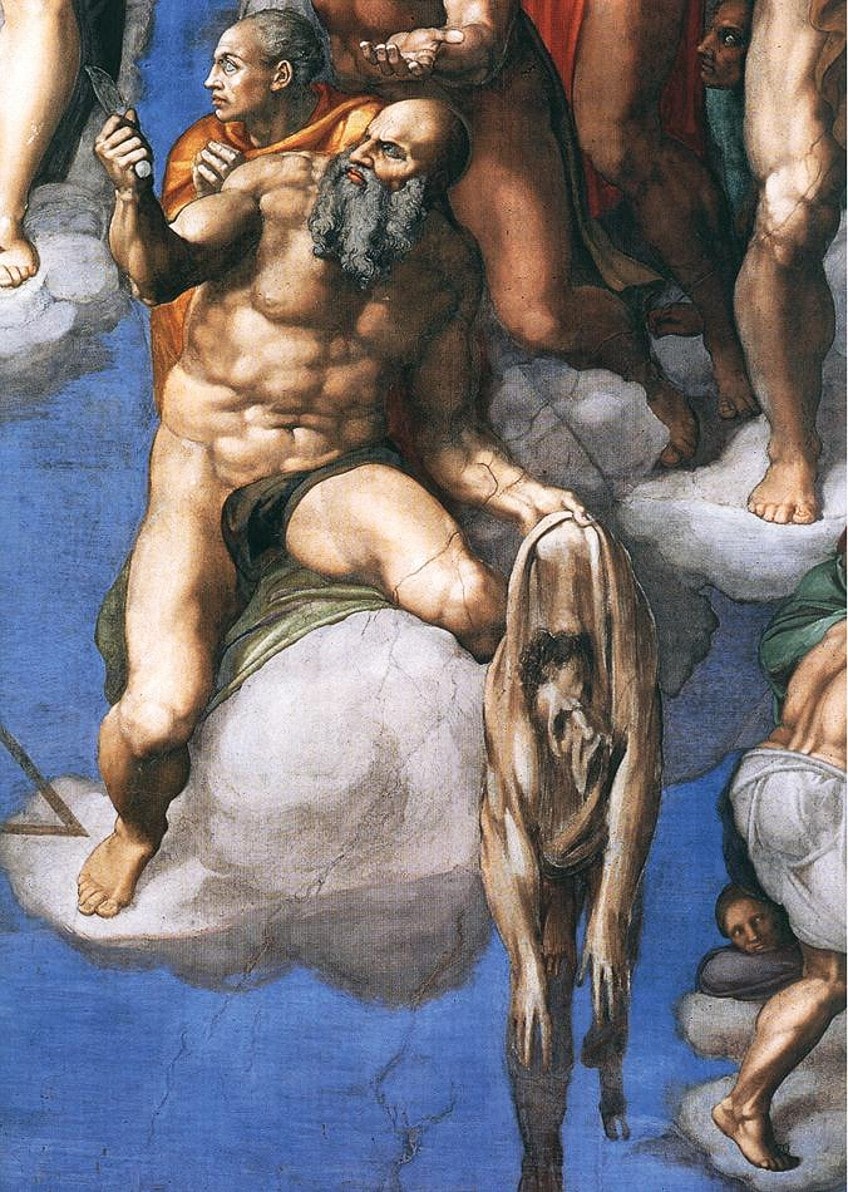
These intertwined inspirations established the foundation for Michelangelo’s particular style, which combines a muscular truth and accuracy with nearly poetic beauty. Michelangelo had his share of critics despite being respected and patronized by the affluent and powerful men of Italy due to his smart mind and plenty of abilities. He had a combative nature and a short fuse, which resulted in tense interactions, frequently with his bosses.
This not only caused Michelangelo to get into problems but also led to general unhappiness on the part of the painter, who always sought perfection but was unwilling to make concessions.
Understanding the Michelangelo Statue of David
| Date Completed | 1504 |
| Medium | Marble |
| Dimensions (cm) | 518 |
| Current Location | Galleria dell’Accademia, Florence |
The statue of David by Michelangelo was initially intended to be one of many prophet sculptures placed along the roof of Florence Cathedral’s east end, but it was instead erected in a square outside the Palazzo Vecchio. What is the statue of David holding and which Las Vegas hotel features a replica of the statue of David? In this part, we shall take an in-depth look at the sculpture of David.

Commission
The statue’s history began before Michelangelo began working on it between 1501 and 1504. members of the powerful woolen fabric guild had intended to commission a series of 12 enormous Old Testament statues for the cathedral’s buttresses before Michelangelo’s participation. Donatello created the first sculpture, a clay statue of Joshua, in 1410. Agostino di Duccio, a Florentine artist, was contracted to create a statue of Hercules in clay in 1463; it is possible that Donatello oversaw its creation.
In order to further their project, the Operai hired Agostino to make a sculpture of David in 1464.
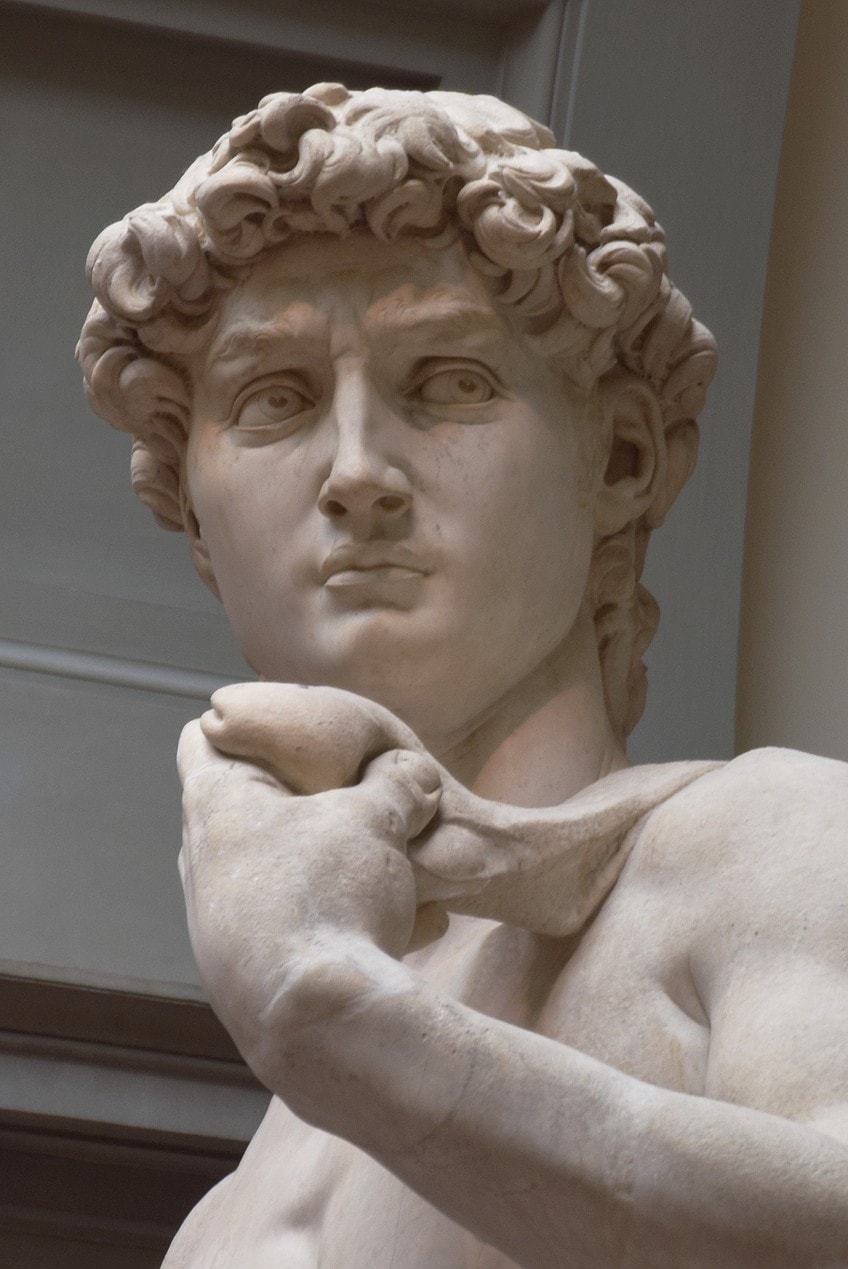
A slab of marble was delivered, and it came from a mine in Carrara, a town in northern Tuscany’s Apuan Alps. Agostino only managed to rough out some draperies, gouge a hole between both the legs, and start shaping the feet, legs, and torso. 10 years after Agostino’s involvement with the project came to an end with Donatello’s untimely death in 1466, Antonio Rossellino was hired to pick on where Agostino had left off.
The slab of marble was abandoned for 26 years while left outside in the yard of the cathedral workshops when Rossellino’s contract was canceled shortly after.
The Opera officials were quite concerned about this since transporting such a massive piece of marble to Florence would be difficult and labor-intensive in addition to being expensive. The sculpture was described as “a particular figure of marble named David, severely blocked out and recumbent” in inventories of the cathedral workshop from 1500.
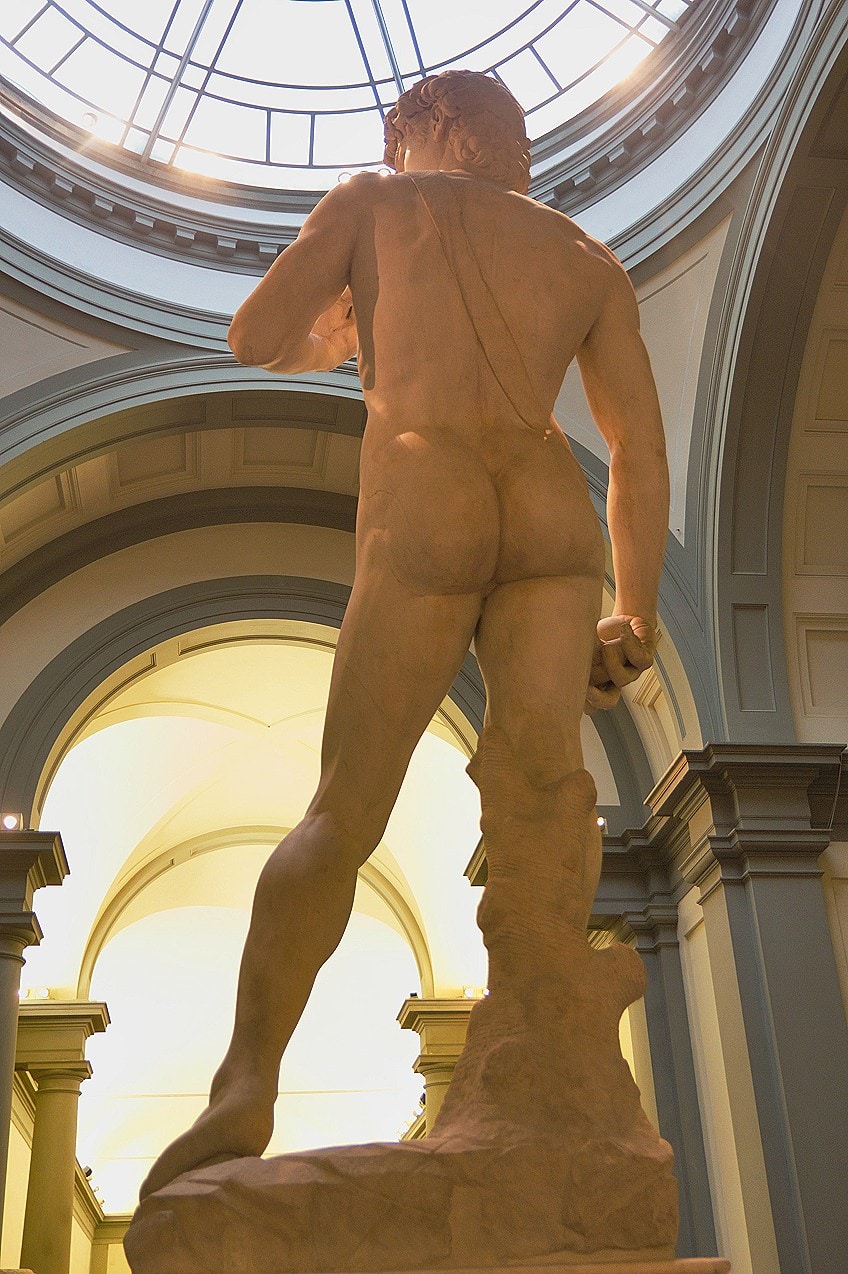
The Operai were eager to locate a craftsman who could transform this sizable block of marble into a full piece of artwork, according to records that were discovered a year later. They requested that the stone block, which they referred to as “the Giant,” be “raised on its feet” so that a craftsman skilled in this field might study it and provide feedback.
Despite consultation with Leonardo da Vinci and others, it was Michelangelo, who was 26 years old, who persuaded the Operai that he should be given the commission.
Michelangelo received the official contract on August 16, 1501, authorizing him to start on this difficult new assignment. On September 13, one month after receiving the contract, he started sculpting the figure early in the morning. He would spend more than two years constructing the enormous statue.
Placement of the Michelangelo Statue
Authorities in Florence had to admit that raising the almost six-ton sculpture to the roof of the cathedral would be difficult on January 25, 1504, as the sculpture was getting close to completion. To choose a suitable location for David, they gathered a committee of 30 Florentine residents, among them Sandro Botticelli and Leonardo da Vinci.
Although there were nine potential places for the statue, the bulk of the members seemed to favor just two.

One team, headed by Giuliano da Sangallo, thought the statue ought to be positioned at the entry to the Palazzo Della Signoria, the city’s town hall, while the other team believed it ought to be positioned under the roof of the Loggia Dei Lanzi due to the marble’s flaws. Botticelli also agreed that the statue should be placed on or close to the church.
The sculpture of “David” was erected adjacent to the Palazzo Vecchio’s entryway in June 1504, taking the place of Donatello’s bronze statue of Judith and Holofernes, which expressed a similar subject of valiant struggle.
Moving the sculpture the half-mile from Michelangelo’s studio to the Piazza Della Signoria took four days. Later that season, the figure received a golden loin-garland in addition to the slings and tree-stump support being gold-plated.
Later History
Small fractures were discovered on David‘s left leg in the middle of the 19th century, which may have been caused by an uneven sinking of the earth beneath the enormous statue. To prevent damage, the statue of David by Michelangelo was taken from the square in 1873 and put on display at Florence’s Accademia Gallery, where it drew a lot of people. In 1910, a copy was erected in Piazza Della Signoria.
An artist named Piero Cannata, who the authorities characterized as insane, assaulted the monument in 1991 with a hammer he had tucked away under his jacket.
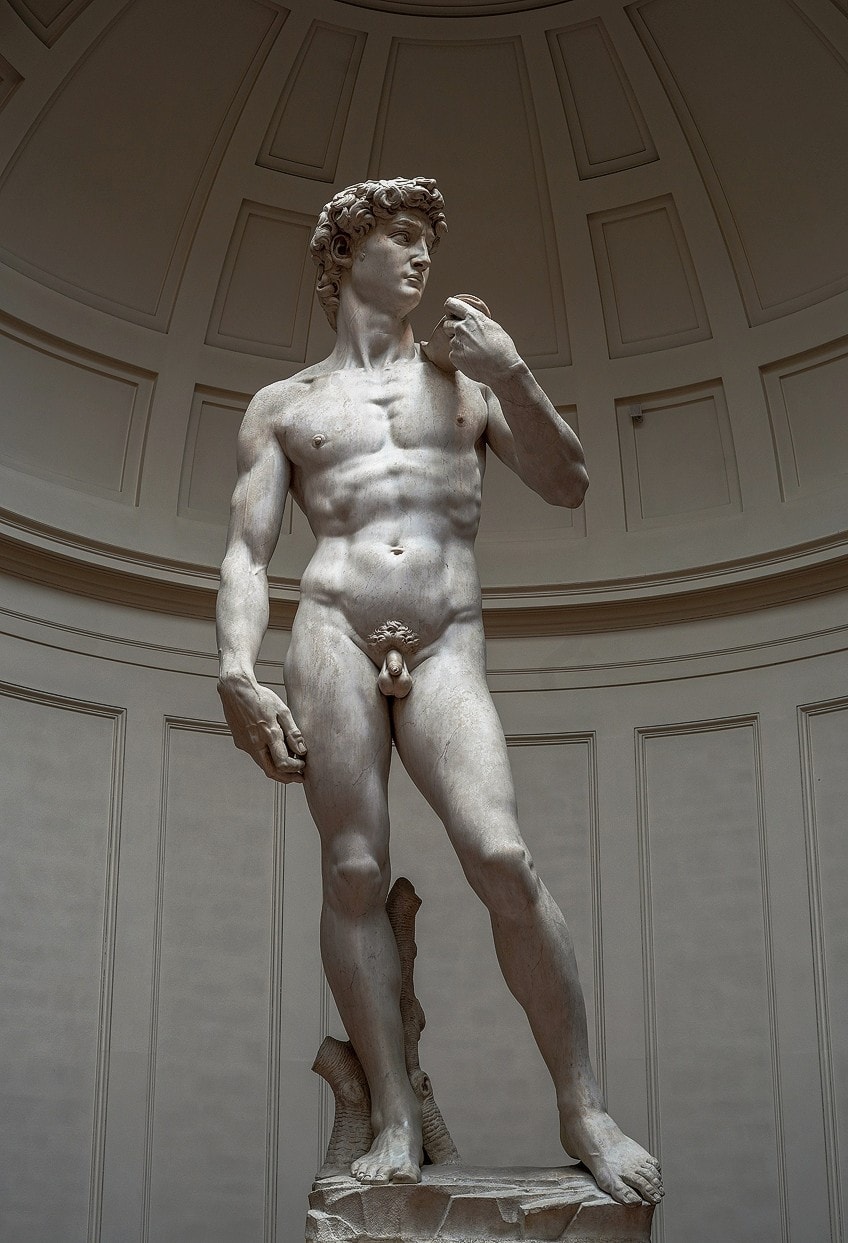
He later claimed that a Venetian artist’s model from the 16th century had instructed him to execute so. As Cannata attempted to injure the left foot’s toes, he was detained. A fiberglass copy of David was temporarily mounted atop the Florence Cathedral’s roof on November 12, 2010, but just for that one day. Photos of the installation show the statue how the Operai intended it to be seen when they commissioned the piece.
The ownership of “David” has been in question since 2010 when the town of Florence asserted possession of the sculpture in defiance of the Italian Culture Ministry, which rejects the municipal claim, based on a legal assessment of historical records.
Interpretations of the Michelangelo Statue
David‘s posture differs from prior Renaissance paintings of him. No earlier Florentine artist had completely left out the giant; however, the bronze statues by Verrocchio and Donatello depicted the hero triumphantly standing over the skull of Goliath, and the artist Andrea del Castagno depicted the boy in mid-swing while Goliath’s head settled between his feet.
Most academics agree that David is shown before his fight with Goliath.
When David decides to take on Goliath, but before the fight actually starts, he appears nervous and prepared for war rather than triumphant over a much greater opponent. His veins protrude from his dropped right hand, his forehead is furrowed, and his neck is tensed. His right hand, which is holding the sling’s handle, is held by a sling that is slung from his left shoulder. The nakedness parallels the biblical account of David “Saul also equipped David with his armor, placing a brass headpiece on his head and giving him a jacket of mail.
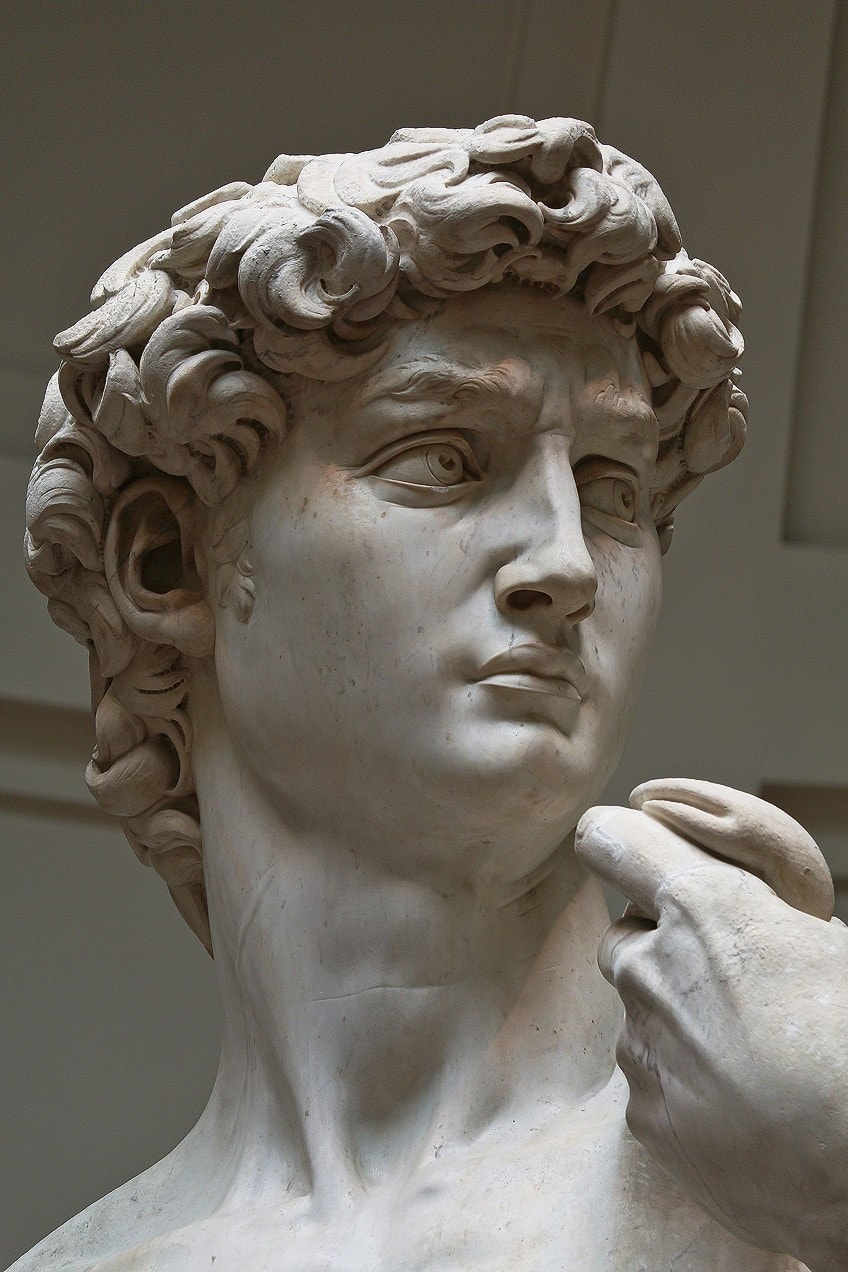
David then attempted to leave after girding his sword around his armor because he still hadn’t proved it. I could not go with these since I have not proven them, David said to Saul. And David turned them away.” His body’s twist effectively gives the audience the sense that he is going to move, which is reinforced by contrapposto. The statue is a Renaissance version of an archetypal ancient Greek figure of the heroic male standing naked. Contrapposto positions were regarded in the High Renaissance as a distinguishing element of classical sculpture, first appearing in the Doryphoros of Polykleitos.
“David” is a good example of this since the figure is standing with one leg supporting the entire weight and the other leg extended.
In this traditional position, the hips and shoulders lie at right angles to one another, giving the entire body a slight s-curve. The head turn and the arms’ opposing placements draw attention to the contrapposto. One of the most well-known Renaissance sculptures and a representation of power and youth is Michelangelo’s David. Michelangelo’s contemporaries were astounded by the statue’s sheer magnitude alone. David‘s proportions are out of character for Michelangelo’s painting; the figure’s head and hands are disproportionately huge.

However, given the artist’s earlier works and prevailing Renaissance standards, the modest size of the genitalia may be a nod to the classical Greek ideal of pre-pubescent masculine nudity. The monument’s original placement on the cathedral roofline may have necessitated these enlargements since the sculpture’s key features would have needed to be highlighted to be seen from below. The carving that was done on the block before Michelangelo started may be the reason why the statue is abnormally thin (front to back) in relation to its height.
Before Michelangelo started working on the “David”, it’s probable that the monument was intended to have a political purpose.
Undoubtedly, David had long been regarded as a political figure in Florence, where representations of the Biblical hero had political connotations. When the Medici family was expelled from Florence in 1494, the Signoria claimed ownership of Donatello’s bronze David, which was created for them sometime around 1440. The statue was then placed in the yard of the Palazzo Della Signoria, where it served as a symbol of the city’s Republican government.

The Florentine authorities made sure that David would be regarded as a political counterpart as well as an aesthetic answer to Michelangelo’s statue by positioning it in the same general area. Due to these political implications, the statue was twice attacked in its early years. It was stoned by protesters the year it made its premiere, and during an anti-Medici uprising in 1527, its left arm was shattered into three parts.
Commentators have drawn attention to the foreskin on David’s penis, which contradicts the Jewish custom of circumcision yet is in line with Renaissance painting traditions.
Conservation of the Sculpture of David
David was buried in brick during World War II to shield it from bombs dropped from the air. David‘s left foot was hurt in 1991 when a person struck it with a hidden hammer and through exposure to the weather. A person with a hammer damaged the monument’s foot in 1991.
Scientists were able to identify the marble used as being from the Fantiscritti quarry in Miseglia, the heart of three tiny valleys in Carrara, thanks to samples recovered from that occurrence.

The marble in issue degrades more quickly than other marbles because it has several small holes. Because of the deterioration of the marble, the monument had its first thorough cleaning since 1843 between 2003 and 2004. To prevent additional degradation, several specialists opposed using water to clean the monument. Restorers Cinzia Parnigoni and Monica Eichmann worked on the monument under the supervision of Franca Falleti.
To protect the marble, it was suggested in 2008 that the statue in Florence’s Galleria dell’Accademia be shielded from the vibration of visitors’ feet.
Replicas of the Statue of David by Michelangelo
Since 1873, David has been on view in Florence’s Galleria dell’Accademia. A bronze replica may be seen from the Piazzale Michelangelo overlooking Florence in addition to the full-sized replica that stands in front of the Palazzo Vecchio where the original formerly stood.

The Victoria and Albert Museum’s plaster cast of David features a removable plaster fig leaf that is on exhibit close by. The fig leaf, according to legend, was made as a reaction to Queen Victoria’s horror at first seeing the statue’s nudity and was draped on the statue before royal visits using two carefully positioned hooks.
The statue of David is clearly on of the most recognized artworks in human history. The David sculpture was sculpted from a block of marble that had been partially cut out by prior sculptors and left outside. It was intended for one of the buttresses of the Florence cathedral. The Florentine administration chose to install the sculpture in front of the Palazzo Vecchio once Michelangelo finished it. The original is currently housed in the Accademia, and replicas have been erected in Florence’s Piazza Della Signoria and Piazzale Michelangelo.
Frequently Asked Questions
Where Is the Statue of David?
After witnessing the final work, the council committee decided to put David outside the Palazzo Vecchio, the town hall, rather than on the roof area of Florence’s Opera del Duomo, the city’s cathedral. It took a great deal of work to place the statue in this public space, which necessitated changing the sculpture from a wooden scaffold. However, because of the statue’s exposed location in the piazza, which made it susceptible to weathering and vandalism, the worried council decided to transfer the sculpture to a more secure area for preservation at the start of the 19th century. It is now located at Galleria dell’Accademia in Florence, Italy.
What Is the Statue of David Holding?
There could have been one of several potential items in his hands. According to the Bible, David carried a shepherd’s staff, several smooth stones, and a sling as he went to battle Goliath. Only the latter of these is seen in Michelangelo’s statue, where David is seen holding the sling bag in his left hand, just above his shoulder.
Which Las Vegas Hotel Features a Replica of the Statue of David?
You can locate an identical duplicate of Michelangelo’s iconic David sculpture at Caesars Palace in Las Vegas. The replica of David, which is over nine tons in weight and measures 18 feet tall, is made of the same Italian marble as the genuine one. The David sculpture is located at Caesars Palace’s Appian Way Shops.
How Tall Is the Statue of David?
The statue of David is just over 15 meters in height. That equates to about 17 feet. The story of David was a common theme in Florentine art.
Isabella studied at the University of Cape Town in South Africa and graduated with a Bachelor of Arts majoring in English Literature & Language and Psychology. Throughout her undergraduate years, she took Art History as an additional subject and absolutely loved it. Building on from her art history knowledge that began in high school, art has always been a particular area of fascination for her. From learning about artworks previously unknown to her, or sharpening her existing understanding of specific works, the ability to continue learning within this interesting sphere excites her greatly.
Her focal points of interest in art history encompass profiling specific artists and art movements, as it is these areas where she is able to really dig deep into the rich narrative of the art world. Additionally, she particularly enjoys exploring the different artistic styles of the 20th century, as well as the important impact that female artists have had on the development of art history.
Learn more about Isabella Meyer and the Art in Context Team.
Cite this Article
Isabella, Meyer, “Statue of David by Michelangelo – Study This Michelangelo Statue.” Art in Context. July 19, 2022. URL: https://artincontext.org/statue-of-david-by-michelangelo/
Meyer, I. (2022, 19 July). Statue of David by Michelangelo – Study This Michelangelo Statue. Art in Context. https://artincontext.org/statue-of-david-by-michelangelo/
Meyer, Isabella. “Statue of David by Michelangelo – Study This Michelangelo Statue.” Art in Context, July 19, 2022. https://artincontext.org/statue-of-david-by-michelangelo/.


